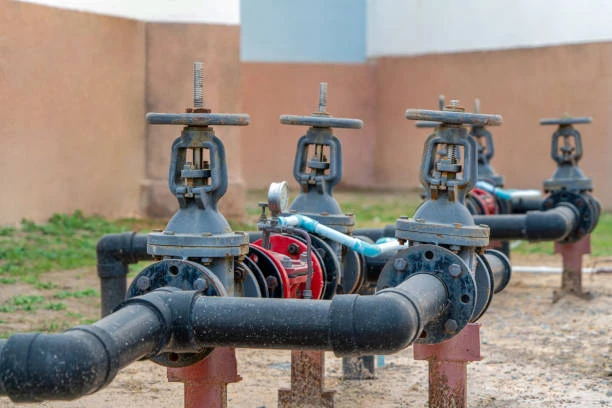The City of San Fernando has initiated a bold campaign titled “Turn Off the Valve” to reclaim its water independence. This move aims to reduce reliance on imported water and instead focus on local resources and sustainable practices. As cities worldwide grapple with water scarcity, San Fernando’s initiative showcases how strategic water management and infrastructure improvements—particularly through advanced valve systems—can lead to self-sufficiency and environmental resilience.
This article explores how the city uses valves as a pivotal tool in achieving water independence and delves into the challenges, solutions, and broader implications of this initiative.
The Importance of Water Independence
Water independence is a critical goal for modern cities. By relying on local water resources, municipalities can reduce costs, increase resilience to droughts, and improve environmental sustainability. The “Turn Off the Valve” campaign reflects San Fernando’s determination to:
- Enhance Resource Efficiency: Ensure optimal use of available water resources.
- Reduce Costs: Minimize dependency on expensive imported water.
- Build Resilience: Prepare for climate-related challenges, such as prolonged droughts or flooding.
The Role of Valves in Achieving Water Independence
Valves are essential components in water distribution and management systems. Their ability to regulate, isolate, and direct water flow makes them instrumental in the efficient use of resources.
Key Functions of Valves in Water Systems
- Flow Control: Valves manage the flow rate, ensuring even distribution across the city.
- Leak Prevention: Advanced valves help detect and reduce water loss caused by leaks.
- System Isolation: During repairs or maintenance, valves isolate specific sections of the network, minimizing service disruptions.
- Pressure Management: Properly calibrated valves maintain pressure balance, reducing wear on pipes and enhancing system longevity.
In San Fernando, these functions are crucial in transitioning from dependency on external supplies to self-reliant water management.

Steps Toward Water Independence
1. Upgrading Infrastructure with Advanced Valves
The city has modernized its water infrastructure, replacing outdated valves with smart, automated systems. These advanced valves offer real-time monitoring and control, ensuring efficient water management.
2. Tapping into Local Water Sources
San Fernando has invested in rehabilitating local wells and reservoirs. By controlling the water flow through valves, the city ensures that these resources are used optimally and sustainably.
3. Enhancing Water Recycling Systems
Recycled water plays a significant role in the city’s water independence strategy. Efficient valves in treatment plants and distribution networks allow seamless integration of recycled water into non-potable uses, such as irrigation and industrial applications.
4. Community Involvement
Public participation has been central to the success of the initiative. Residents are encouraged to install efficient valves in their homes and adopt water-saving habits to complement the city’s efforts.
Challenges in Transitioning to Water Independence
Despite its progress, San Fernando faces several obstacles:
- High Initial Costs: Modernizing water systems and installing advanced valves require significant investment.
- Aging Infrastructure: Some sections of the water distribution network are outdated, complicating the integration of new technology.
- Public Resistance: Educating the community about the importance of water independence and gaining their support is a continual effort.
- Climate Variability: Changes in rainfall patterns can impact the availability of local water sources.
To address these challenges, the city has adopted a phased approach, ensuring that progress is steady and sustainable.
The Broader Implications of San Fernando’s Initiative
San Fernando’s “Turn Off the Valve” campaign sets an example for other cities seeking to enhance water independence. Its emphasis on modern valve systems, community involvement, and resource optimization demonstrates that urban centers can thrive sustainably with the right strategies.
Key Takeaways for Other Cities
- Invest in Smart Infrastructure: Advanced valves and monitoring systems are game-changers for water management.
- Prioritize Local Resources: Tap into local wells, reservoirs, and recycling facilities to reduce dependency on imported water.
- Engage the Community: Public support and participation are crucial for the success of large-scale initiatives.
- Plan for the Long Term: A phased, sustainable approach ensures resilience and adaptability.
Conclusion
The City of San Fernando’s “Turn Off the Valve” initiative exemplifies how innovative water management practices and modern valve systems can drive sustainability and self-reliance. By upgrading its infrastructure, prioritizing local resources, and involving the community, San Fernando is charting a path to water independence.
As the campaign continues to evolve, it offers a model for cities worldwide to rethink their approach to water management, ensuring a resilient and sustainable future for all.
FAQs
1. What does ‘Turn Off the Valve’ mean in San Fernando’s campaign?
The campaign symbolizes the city’s effort to reduce reliance on external water sources by focusing on local resources and sustainable water management practices.
2. How do valves contribute to water independence?
Valves regulate water flow, prevent leaks, manage pressure, and isolate sections during maintenance, ensuring efficient and sustainable water distribution.
3. What are the benefits of achieving water independence?
Water independence reduces costs, increases resilience to climate variability, and promotes sustainable use of local water resources.
4. How has San Fernando involved the community in this initiative?
The city encourages residents to conserve water, install efficient valves in homes, and support recycling efforts to complement municipal initiatives.
5. What challenges does San Fernando face in achieving water independence?
The city must address high infrastructure costs, aging systems, public resistance, and climate variability to achieve its goals.

















